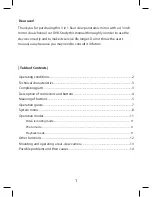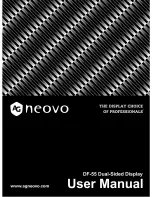
xiQ - Technical Manual Version 1.0
64
4.4.
Camera Parameters and Features
4.4.1.
Exposure
Also known as shutter speed. This parameter defines the length of the integration period for each frame.
Most of CMOS sensors generate the exposure interval internally. For some it is possible to control it by external signaling. The
sensor internal timing depends on the provided system clock. Most sensors are using dividers to generate slower clocks for
internal usage.
The exposure time is mostly defined by number row times, where the row time is dependent on various internal settings. Very few
sensors support exposure times equal to zero. There is defined minimal exposure time as well as steps between possible
exposure times.
4.4.2.
Gain
The gain value influences the analog-to-digital conversion process of the image sensor pipeline and acts as a multiplier of the
output signal. Using gain values greater than 0 will increase the pixel intensities but may also increase the overall noise level.
4.4.3.
Auto Exposure – Auto Gain
When AEAG is used, every captured image is evaluated for its mean intensity. Based on the result, the exposure and gain values
are modified with the objective to achieve a target intensity level for the following image. Further, the maximum applicable
exposure and gain values can be defined. Since both, exposure and gain, have an influence on the intensity, the ratio between
those two parameters in their contribution to the algorithm can also be set (exposure priority).
4.4.4.
White Balance
Only for color models: The white balance can be adjusted with three coefficients kR, kG and kB, one for each color channel.
These coefficients can be set individually in order to increase or decrease each channel’s contribution and therefore allow the
user to control the color tint of the image.
4.4.4.1.
Assisted Manual White Balance
This feature measures the white balance a single time and sets the white balance coefficient to achieve a mean grey (neutral) tint.
The measurement is performed on the central rectangle of the image, with 1/8
th
of its width and height. The function expects a
white sheet of paper exposed to 50% of the intensity values (8 Bit RGB values should be around 128) to be visible.
4.4.4.2.
Auto White Balance
The white balance is measured across the full image for every 4
th
image that is acquired and the white balance coefficients are
set to to achieve a neutral colour tint.
4.4.5.
Gamma
Only for color models: As a part of the color filtering process, it is possible to adjust the gamma level of the image. The
adjustment can be set separately for the luminosity and the chromaticity.
4.4.6.
Sharpness
Only for color models: As a part of the color filtering process, it is possible to adjust the sharpness of the image.
4.4.7.
Color Correction Matrix
The color correction matrix is a 4x4-matrix which is applied on each pixel of an image in a host-assisted port-processing step.
This Matrix can be used for example to adjust the brightness, contrast, and saturation.
















































